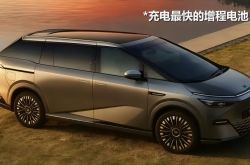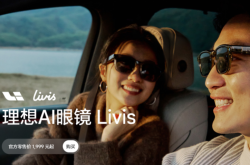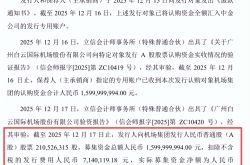Apple's new features are unusable, and the initial outcome of the dispute between Huawei and Apple becomes evident
![]() 09/12 2024
09/12 2024
![]() 645
645
Detective Officer of Baker Street
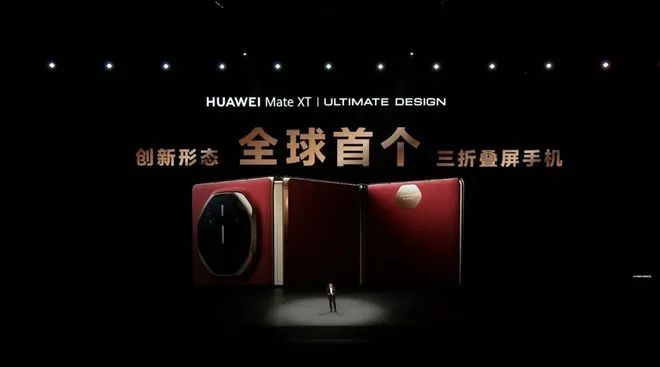
Author
Luxi Lu
The boat has sailed through countless mountains
Waking up to the lack of innovation in Apple's iPhone 16 once again flooded social media. Unlike in the past, even the forced praise this time couldn't hold up, as the new AI features in iPhone 16 won't be available until next year. The A18 chip boasts energy efficiency improvements and a 3%-4% increase in battery life, but as everyone knows, such a slight increase in battery life has negligible impact on the actual user experience.
Ironically, after Apple's keynote address dominated the charts, the first trending topic was 'Apple's color scheme is ugly.'
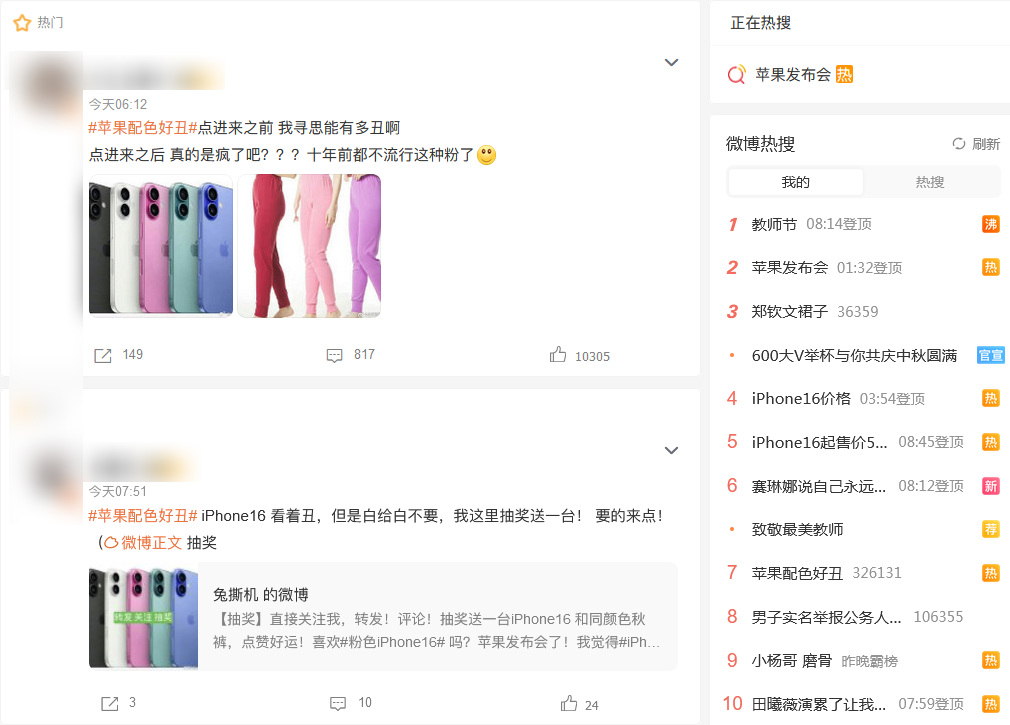
The only visible innovation that Apple brought to domestic consumers at this year's keynote was the addition of a camera control button, allowing for control over shooting and zooming. It somehow feels like a tribute to the vanished veteran of the mobile phone industry, Apple's old rival BlackBerry.
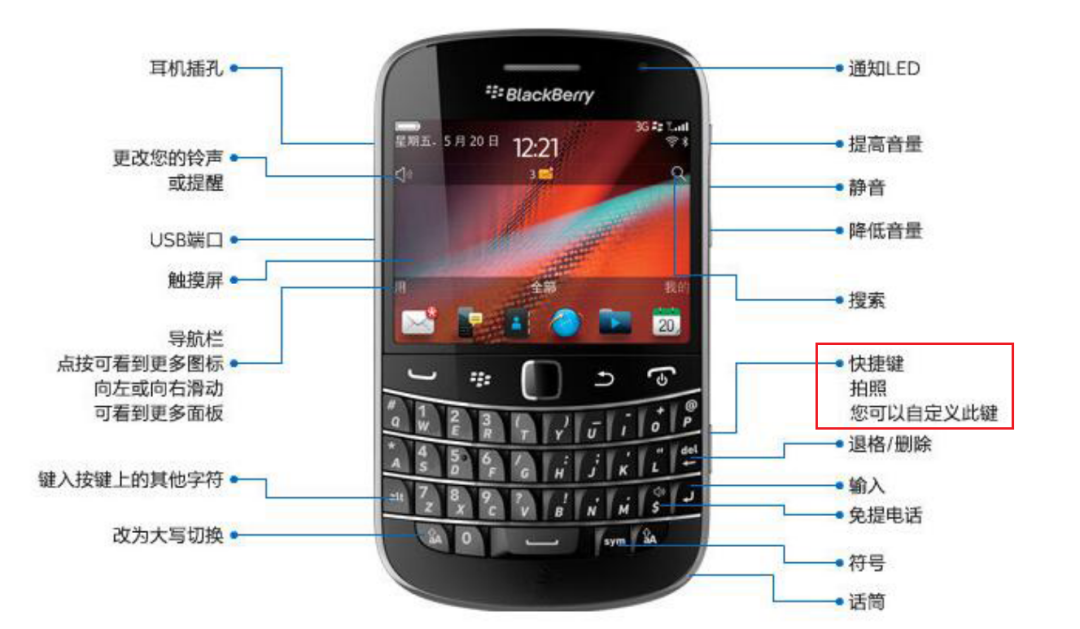
After Apple co-founder Steve Jobs unveiled the original iPhone in 2007, the design philosophy of 'less is more' instantly ignited the world. Over the past 17 years since Jobs' passing, Apple under the leadership of Tim Cook, despite being criticized by Jobs' daughter for a lack of innovation, has at least not regressed, adding buttons to the iPhone's frame, which once redefined mobile phones.
Starting with iPhone 16, Apple, which once believed that 'consumers don't know what they want,' has completely surrendered in the field of mobile phone design innovation. Instead of trying to tell consumers what they need, it now follows the market, manufacturing what consumers demand.
In contrast, Huawei, which began emerging from sanctions in 2023, has continued to innovate. Following Yu Chengdong's emphasis on 'the latest standard is when there's no displayed standard,' and after realizing two-way satellite communication, Huawei has once again extended its dual-folding screen technology to triple-folding. Currently, pre-orders for the HUAWEI Mate XT have surpassed 5 million, with an additional million pre-orders added within a day of the keynote.
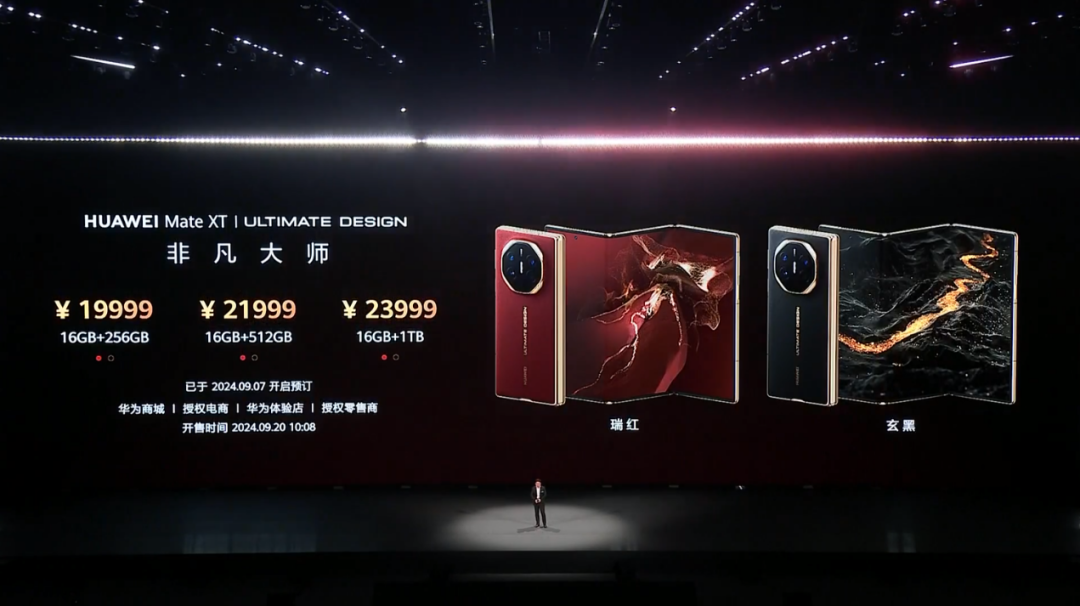
Regardless of the current social media sentiment towards Apple and Huawei, the gap in innovation between the two is evident. Many people struggle with hardware, optimization, and even imaging. When Apple uses Sony's camera modules yet prohibits Sony from supplying Huawei, forcing the latter to develop independently, it exposes the insecurity of Apple and its backers.
After all, in the second quarter of 2020, Huawei phones still accounted for 20.2% of the global market share and 45.2% of the Chinese market share, topping both charts. After supply restrictions, they fell into the 'others' category but have since returned to the top 5 with the Mate 60. Apple's 'camera control button' and currently unusable AI features in China seem to be desperate moves in response to Huawei's relentless innovation.
01
Innovative effectiveness of Apple's camera control button and usage scenarios of triple folding
After the introduction of the camera control button in iPhone 16, some netizens hailed it as 'Apple's strongest button ever,' capable of redefining mobile photography. Paired with the upgraded 6.9-inch screen, iPhone 16 could become Apple's most powerful photography device to date.
However, those familiar with the mobile phone industry know that both BlackBerry, Samsung, and domestic manufacturers have previously introduced shooting buttons or multi-function custom buttons. After market validation, many have introduced accessories to enhance shooting stability, such as handheld gimbals or phone cages. On this basis, more expansion components can be added.
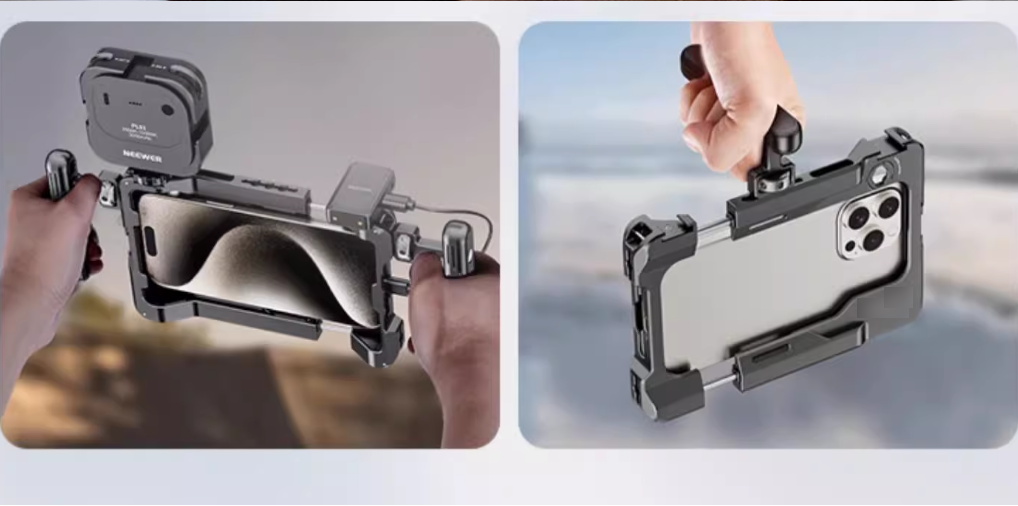
Currently, popular video bloggers rely less and less on direct phone footage without accessories. Some accessory factories have even developed 'Steadicam kits' tailored for mobile phone use.
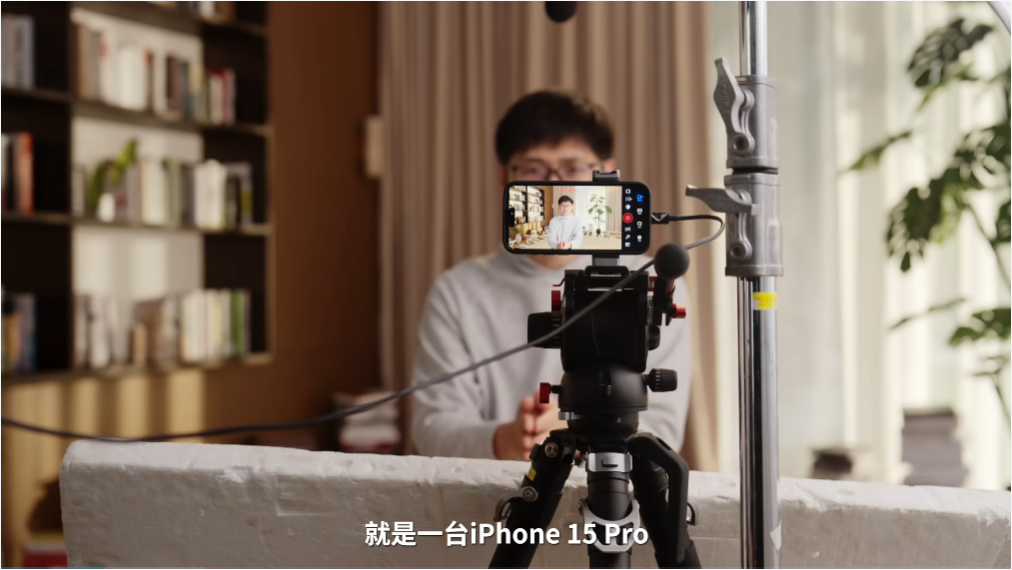
Image source: Bilibili blogger Movie Hurricane
When it comes to Apple's advanced camera features, the inconvenience of focus control has been criticized by most advanced users. Movie Hurricane has also complained about this function in its videos.
Since Apple's native camera focus control only supports touch-to-focus, once the phone cannot be touched, this function becomes unusable before shooting, relying solely on post-production, which unnecessarily increases workload. After numerous attempts, a cumbersome workflow has been summarized: turning on accessibility settings, enabling touch, selecting mouse cursor, and connecting a Bluetooth mouse or trackpad to use focus control when touch is unavailable. Compared to the currently exposed camera control button features, enhancing the operational convenience of advanced functions like focus control may be more helpful for Apple's advanced camera users.
A similar dilemma exists with Huawei's newly released Mate XT. Upon its triple-folding announcement, countless netizens have dismissed its usefulness, forgetting that when the flexible screen concept was first introduced at an electronics exhibition, many envisioned tablets that could fit in their pockets. Now that it's a reality, people question its significance.
When fully unfolded, the Mate XT's screen reaches 10 inches, yet its weight is controlled at 307 grams, lighter than many tablets of the same size. Despite supply chain restrictions, Huawei has consistently innovated within its capabilities. Regarding the often-criticized high price, it's worth noting that purchasing a Mate XT essentially buys you a high-end phone and a high-end tablet. From this perspective, the investment is worthwhile, especially as the target audience wouldn't consider value for money.
Paired with the Mate XT's multi-angle hover function, usage scenarios become more diverse. Huawei has even launched a foldable keyboard compatible with the Mate XT, partially serving as a productivity tool. When combined with Huawei's AI capabilities, which are unhindered in the domestic market, the Mate XT excels at tasks like text creation and document approval. If not for budgetary constraints, a Mate XT paired with a foldable keyboard would be an ideal choice for media professionals seeking to boost productivity. However, given its price point, it's currently more suitable for business owners.
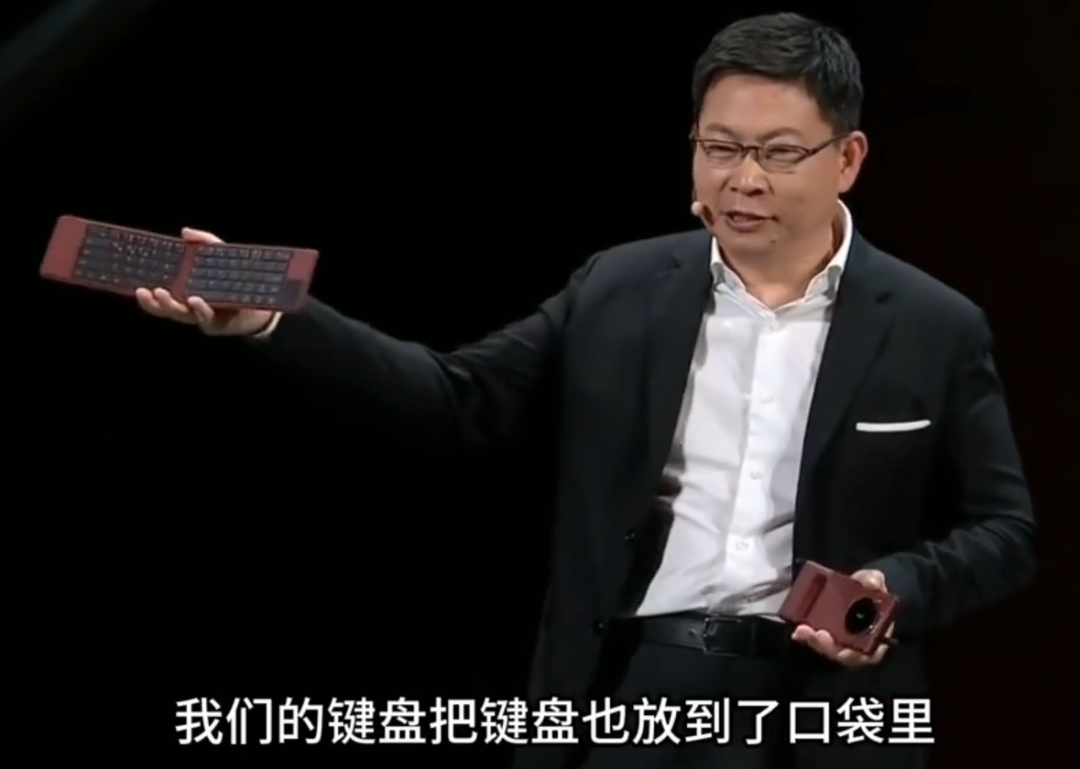
The comparison between Apple and Huawei extends beyond mobile phones and tablets.
02
The difference between Apple's decision not to manufacture cars and Huawei's decision not to manufacture cars
For a long time, rumors of Apple manufacturing cars flooded the internet, with tech bloggers even rendering 'Apple concept cars.' The hype subsided slightly only after Apple officially announced its decision to abandon car manufacturing plans.
While Apple was abandoning its car manufacturing plans, Huawei, facing supply restrictions, extensively deployed in smart homes, new energy vehicles, and other sectors, aiming to compensate for revenue lost due to sanctions on its mobile phone product line.
At Huawei's keynote, the company's leading intelligent driving system was officially upgraded to 'ADS 3.0' and rolled out to all HarmonyOS-powered vehicles on September 11, 2024.
From a consumer perspective, vehicles equipped with Huawei's intelligent driving system have gained initial recognition. For example, the AITO M9, priced between 460,000 and 520,000 yuan and equipped with the intelligent driving system, surpassed the combined sales of the top 20 vehicles priced above 500,000 yuan in July 2024.
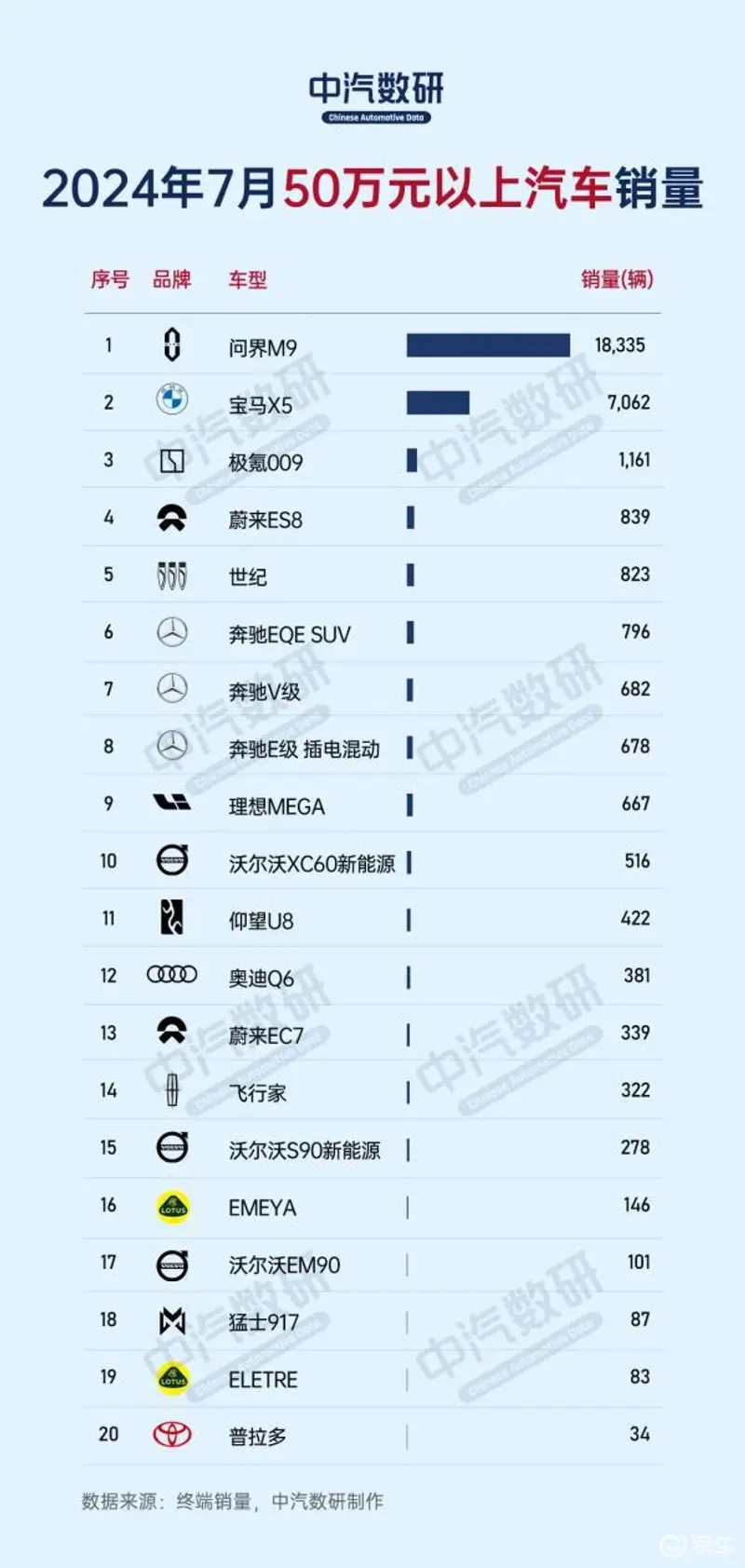
Setting aside the comfortable ride experience offered by the AITO M9's smart cockpit, let's focus on Huawei's intelligent driving system. Before upgrading to ADS 3.0, when encountering disruptions during autonomous driving, human intervention was necessary. However, ADS 3.0 seamlessly bridges these disruptions.
Take the first ADS 3.0-equipped Envision S9 as an example. Facing narrow, sharply curved garage exits, the S9 can navigate them with ease, maneuvering like an experienced driver. Although the system still requires manual input for the first parking spot, it doesn't limit the number of routes like previous 'memory-based' systems. ADS 3.0 supports any previously visited parking spots.
For roundabout routes, ADS 2.0 required manual intervention upon exiting the roundabout before continuing with the system. In contrast, ADS 3.0 seamlessly navigates both entering and exiting roundabouts, effectively avoiding obstacles.
The Envision S9's rearview mirror system also differs from existing models. In extreme weather conditions like heavy rain or snow, electronic rearview mirrors are often clearer than traditional optical ones due to windshield and window condensation. Night driving with oncoming headlights can also impair visibility, which electronic mirrors effectively mitigate. Perhaps future Huawei intelligent driving premium models will adopt such mirrors.
Architecturally, ADS 3.0 upgrades from BEV to GOD (General Obstacle Detection), a leap from simply 'detecting obstacles' to deeply 'understanding driving scenarios,' ensuring safer autonomous driving and an enhanced riding experience. Furthermore, ADS 3.0's new PDP (Prediction, Decision, Planning, and Regulation) network facilitates human-like decision-making and planning, resulting in more human-like driving trajectories, higher traffic efficiency, and a complex intersection passage rate exceeding 96%.
ADS 3.0 is not limited to regular roads but truly realizes a Navigation Cruise Assist (NCA) function from parking spot to parking spot, seamlessly connecting open roads, campus roads, and underground parking, offering an unprecedented convenient experience.
Looking back at Huawei's Intelligent Automotive Solutions (IAS) journey, in November 2023, Huawei signed a memorandum of investment cooperation with Changan Automobile, deciding to integrate IAS-related businesses into a newly established joint venture, Shenzhen Yingwang Intelligent Technology Co., Ltd. This move marked the independent operation of Huawei's IAS, with Guang Product Line head Jin Yuzhi appointed CEO, replacing Yu Chengdong as Chairman.
Regarding Shenzhen Yingwang's profitability, according to the simulated financial statements for 2022 to the first half of 2024 issued by Daxin Certified Public Accountants (Special General Partnership) in AITO's announcement, Shenzhen Yingwang's revenue was 2.098 billion yuan, 4.7 billion yuan, and 10.435 billion yuan, respectively, with gross margins of 17.73%, 32.13%, and 55.36% for its main business. Net income attributed to shareholders of the parent company was -7.587 billion yuan, -5.597 billion yuan, and 2.231 billion yuan for 2022 and the first half of 2024, transitioning from losses to profits.
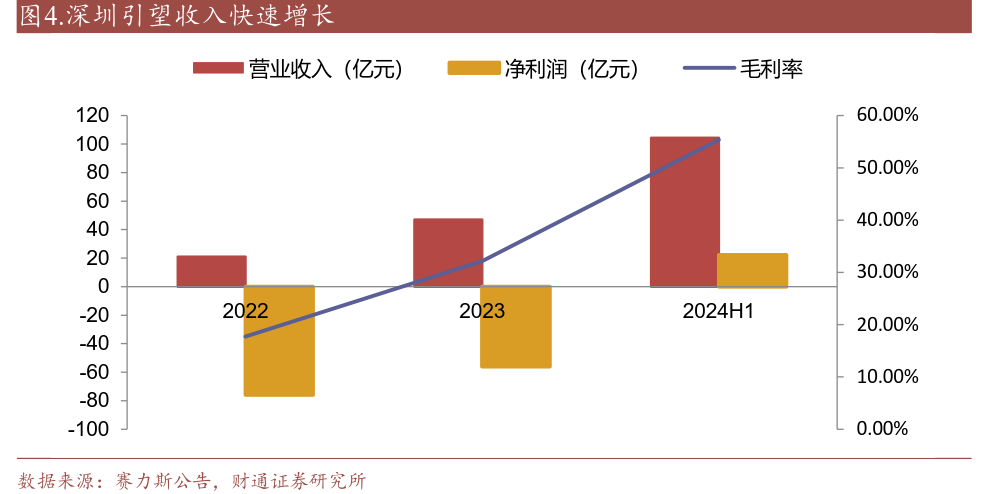
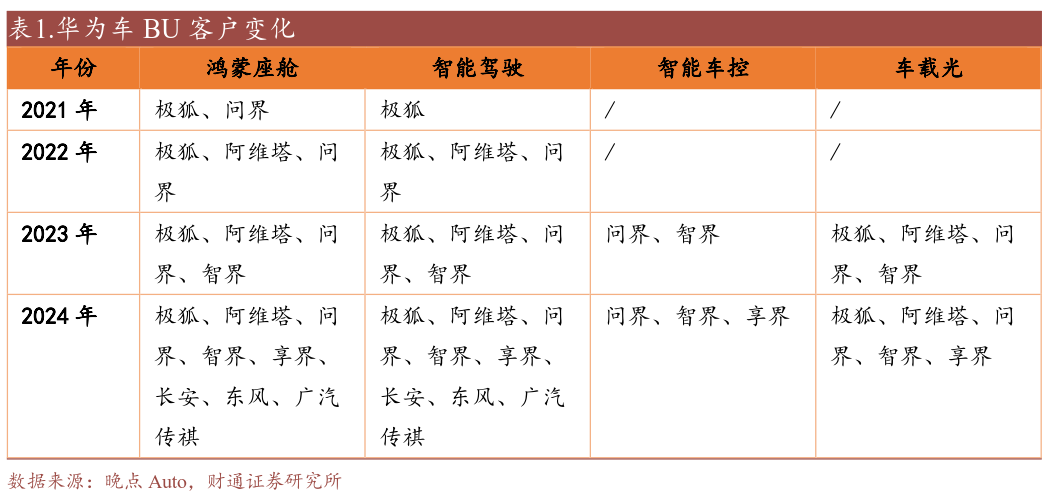
According to Huawei, IAS currently offers five major solutions, including Intelligent Driving Solutions, Smart Cockpit, Intelligent Automotive Digital Platform, Intelligent Automotive Cloud, AR-HUD, and Smart Lighting. Huawei's intelligent driving customers include ARCFOX, AVATR, AITO, Zhijie, Enjoy, Changan, Dongfeng, and GAC Motor.
In July 2024, HarmonyOS Intelligent Driving delivered 44,100 new vehicles, with cumulative deliveries reaching 238,300 for the first seven months. AITO continued to drive sales, with nearly 400,000 cumulative deliveries over two years and five months. The new M5 surpassed 20,000 deliveries, and the new M7 became the best-selling SUV above 300,000 yuan, with cumulative bookings exceeding 240,000. The M9 led luxury vehicle sales above 500,000 yuan, with over 120,000 deliveries. According to Gaishi Automotive Research Institute's prediction, AITO's sales could reach 470,000 vehicles in 2024.
In April 2024, Huawei's IAS held a keynote in Beijing, where CEO Jin Yuzhi unveiled Kunlun, a new intelligent automotive solutions brand centered on intelligent driving. Kunlun introduced upgraded solutions like Kunlun ADS, Kunlun Vehicle Control, and Kunlun Automotive Cloud. ADS 3.0 was officially announced at this event, alongside new products like 4D millimeter-wave radar, iDVP 2.0, XMOTION 2.0, and the Magpie large model.
If Apple had been grounded in developing its automotive business since its initial disclosure in 2014, it wouldn't have ended so abruptly, losing a lucrative product line with significant earning potential. Currently, Huawei has all the product lines that Apple has and more. Even if Europe and the United States further restrict Huawei's supply chain, its multi-pronged approach ensures higher risk resilience than before sanctions. Especially with mobile phones, tablets, and computers recovering from previous restrictions, to quote Yu Chengdong from Huawei's keynote, 'The boat has sailed through countless mountains.' Huawei may continue to bring innovative experiences to consumers in the future.
© THE END
This article is only for sharing and learning, and does not constitute any investment advice.
This article is originally created by Baker Street Detective Agency. Please do not reprint without permission.

